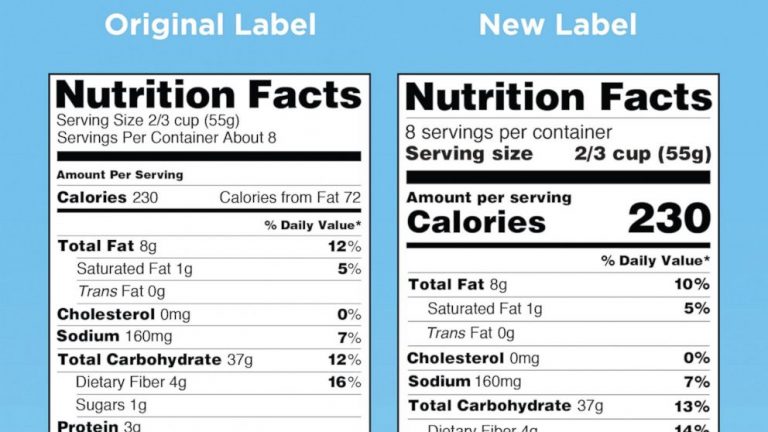Everyone knows the Nutrition Facts label — it’s been around so long that it’s become part of the background. Most consumers barely notice it. But for those that do, it provides important nutritional and dietary information that is used to help manage their daily and overall health.
On May 27, 2016, the FDA published new rules and required the majority of businesses to be compliant by January 1, 2020. That was several weeks ago at the time of this writing. If you haven’t made the change, now is the time.
But what are those changes? Why is the FDA doing this? How much time do I have to comply? Check out this handy guide to get caught up on the facts:
Why is The FDA Nutrition Facts Label Changing?
Since the FDA Nutrition Facts label was introduced in 1990, dietary habits and needs have changed. Among the things that have changed are:
- New information on the link between diet and obesity and heart disease
- Larger serving sizes being consumed
- New research on Daily Recommended Values of nutrients
- More information on sugars and their effect on the human body
In addition to this research, the FDA label is also being updated to be more readable, with special emphasis on important information like calorie counts and actual amounts (in grams).
Who is Affected by This Change?
Anyone who manufactures food that is sold in the United States is expected to apply the new label to their packaging (regardless of the point of origin). There are different groups of manufacturers covered by the new rules, each of which with its own compliance date.
- Manufacturers with $10 million or more in annual food sales must comply by Jan 1, 2020
- Manufacturers with less than $10 million in annual food sales must comply by Jan 1, 2021
- Manufacturers of single-ingredient sugars like honey or syrup (and certain cranberry products) must comply by July 1, 2021
- Manufacturers of flavored and dried cranberry products must comply by July 1, 2020
What Has Changed in the New FDA Nutrition Facts Label?
The changes fall under three general categories: Design, Updated Nutrition Science, and Serving Size Changes. Let’s review the details of each:
Design
- Increased font size for the following information:
- Calories
- Servings per container
- Serving size
- An applied bold font to:
- Number of calories
- Serving size
- Declaring both the actual amount and % Daily Value of the following:
- Vitamin D
- Calcium
- Iron
- Potassium
- % Daily Value footnote updated to read: “The % Daily Value tells you how much a nutrient in a serving of food contributes to a daily diet. 2,000 calories a day is used for general nutrition advice.”
Updated Nutrition Science
- “Added sugars” will be included in labels in both grams and % Daily Value.
- Vitamin D, potassium, iron and calcium are all required to be on the label. Vitamins A and C are no longer required but can be included on a voluntary basis.
- Research shows that the type of fat is more important than the amount. As such, “Calories from fat” is being removed while “Total Fat,” “Saturated Fat,” and “Trans Fat” amounts are still required.
- Daily Values for nutrients are being updated based on new evidence from the Institute of Medicine.
Serving Size Changes
- Serving size is now based on what people actually eat, not what they should be eating. This has caused serving size calculations to change for most pre-packaged products.
- Package size affects what people eat. Foods that are normally consumed in one sitting will be labeled as such.
- Manufacturers must provide “dual-column” nutrition tables for products that contain multiple servings but could be consumed in one sitting/multiple sittings, This dual-column label would include both “per package/unit” and “per serving” calculations.
Need FDA Compliant Labels? BOHA! Makes It Possible
Visit the FDA website for the complete list of changes and resources.
